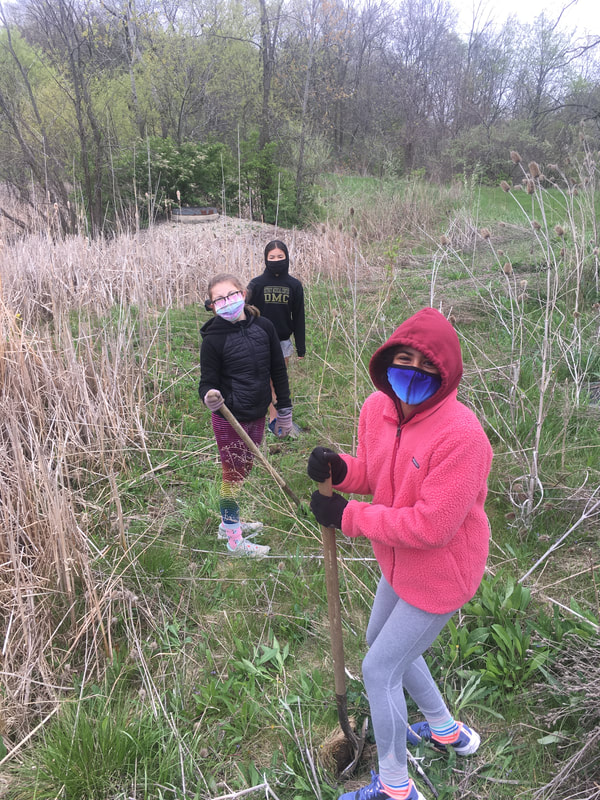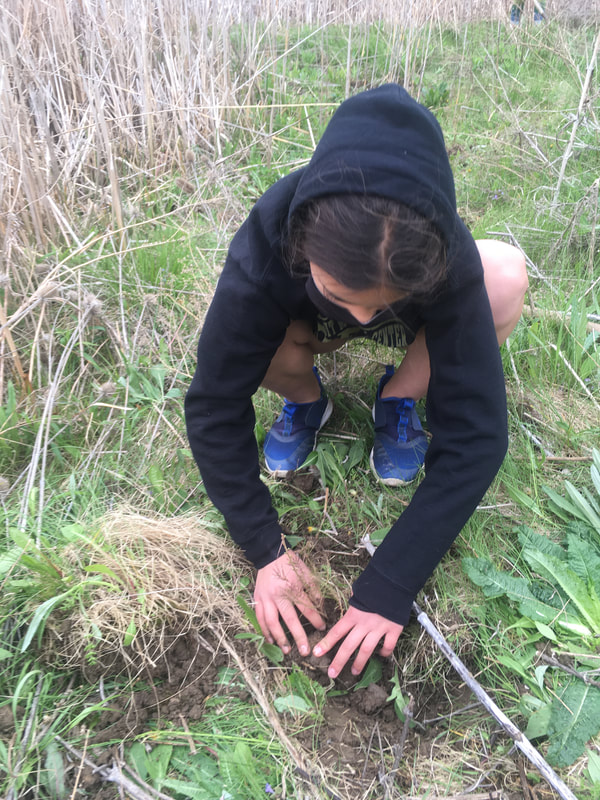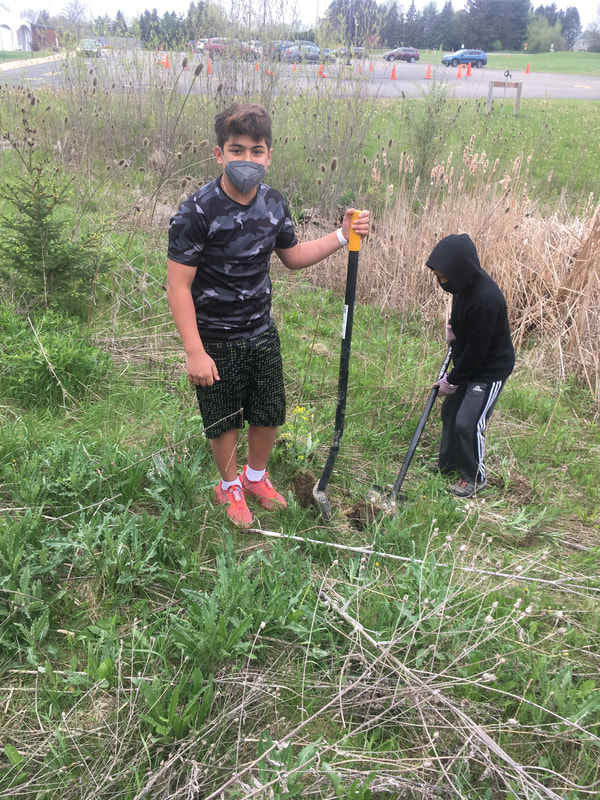Educational Opportunities through Permaculture
By Matt Nolan, Emerson Middle School Science Teacher, Permaculture Garden Coordinator and 2019 Tree Conservationist of the Year Awardee
In the Winter of 2015, what would one day become Emerson School's Garden site was a typical gardener's nightmare. Heavy machinery, used for adding a new Performing Arts wing to the building, sat parked on the ground, compacting soil that was already overly rich in clay and woefully deficient in organic matter. Rains would regularly flood the area with salts and oil from the sizable parking lot just Northeast and above it. To add insult to injury, the site also had to compete with the growth-suppressing tendencies of stately Black Walnut trees to the South. In short, this bruised and broken plot of land was the perfect place to test out the restorative methods that Permaculture gardening employs.
"Permaculture" is a method of creating “consciously designed landscapes which mimic the patterns and relationships found in nature, while yielding an abundance of food, fibre, and energy for provision of local needs.” Originally coined by Australians Bill Mollison and David Holmgren in the mid-70s, it draws inspiration from studying natural ecosystems, as well as on learning from “indigenous, tribal, and other cultures of place.” Emerson School's journey to implement these principles started with direction from Nathan Ayers at Chiwara Permaculture of Ann Arbor in the fall of 2016. With his help, 6th-8th grade students brainstormed and eventually settled on a design that would re-invigorate the degraded space into a functional food forest and school garden. Throughout that school year and the years that followed, a rotating group of Emerson and Summer @ Emerson students have put in the bulk of the hard work needed to make these visions a reality, from digging berms and swales to slow and catch water, to sheet mulching paths and growing spaces to build the soil, to building benches and trellises, painting signs, and most importantly planting a biodiverse mix of shrubs, vines, trees, and native plants, (largely sourced from the WCCD's Spring Tree & Native Plant sales). A few bigger projects brought a cob oven and large central arbor in 2018, and a mobile "chicken tractor" in 2019. Although 2020 put a pause on development of the garden and let the space grow a bit rougher around the edges, hope springs eternal in 2021, with chickens now hard at work fertilizing the soil, flowers blossoming with the promise of future fruits, and students back at learning how to regenerate our wild little space.
-Quotations from Permaculture One (1981) by Holmgren & Mollison
In the Winter of 2015, what would one day become Emerson School's Garden site was a typical gardener's nightmare. Heavy machinery, used for adding a new Performing Arts wing to the building, sat parked on the ground, compacting soil that was already overly rich in clay and woefully deficient in organic matter. Rains would regularly flood the area with salts and oil from the sizable parking lot just Northeast and above it. To add insult to injury, the site also had to compete with the growth-suppressing tendencies of stately Black Walnut trees to the South. In short, this bruised and broken plot of land was the perfect place to test out the restorative methods that Permaculture gardening employs.
"Permaculture" is a method of creating “consciously designed landscapes which mimic the patterns and relationships found in nature, while yielding an abundance of food, fibre, and energy for provision of local needs.” Originally coined by Australians Bill Mollison and David Holmgren in the mid-70s, it draws inspiration from studying natural ecosystems, as well as on learning from “indigenous, tribal, and other cultures of place.” Emerson School's journey to implement these principles started with direction from Nathan Ayers at Chiwara Permaculture of Ann Arbor in the fall of 2016. With his help, 6th-8th grade students brainstormed and eventually settled on a design that would re-invigorate the degraded space into a functional food forest and school garden. Throughout that school year and the years that followed, a rotating group of Emerson and Summer @ Emerson students have put in the bulk of the hard work needed to make these visions a reality, from digging berms and swales to slow and catch water, to sheet mulching paths and growing spaces to build the soil, to building benches and trellises, painting signs, and most importantly planting a biodiverse mix of shrubs, vines, trees, and native plants, (largely sourced from the WCCD's Spring Tree & Native Plant sales). A few bigger projects brought a cob oven and large central arbor in 2018, and a mobile "chicken tractor" in 2019. Although 2020 put a pause on development of the garden and let the space grow a bit rougher around the edges, hope springs eternal in 2021, with chickens now hard at work fertilizing the soil, flowers blossoming with the promise of future fruits, and students back at learning how to regenerate our wild little space.
-Quotations from Permaculture One (1981) by Holmgren & Mollison




